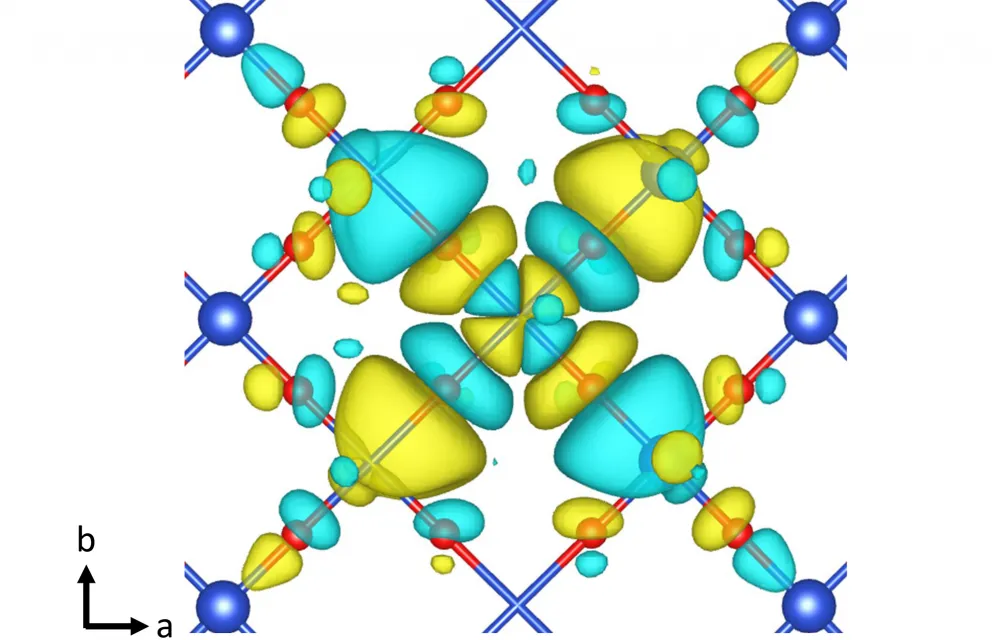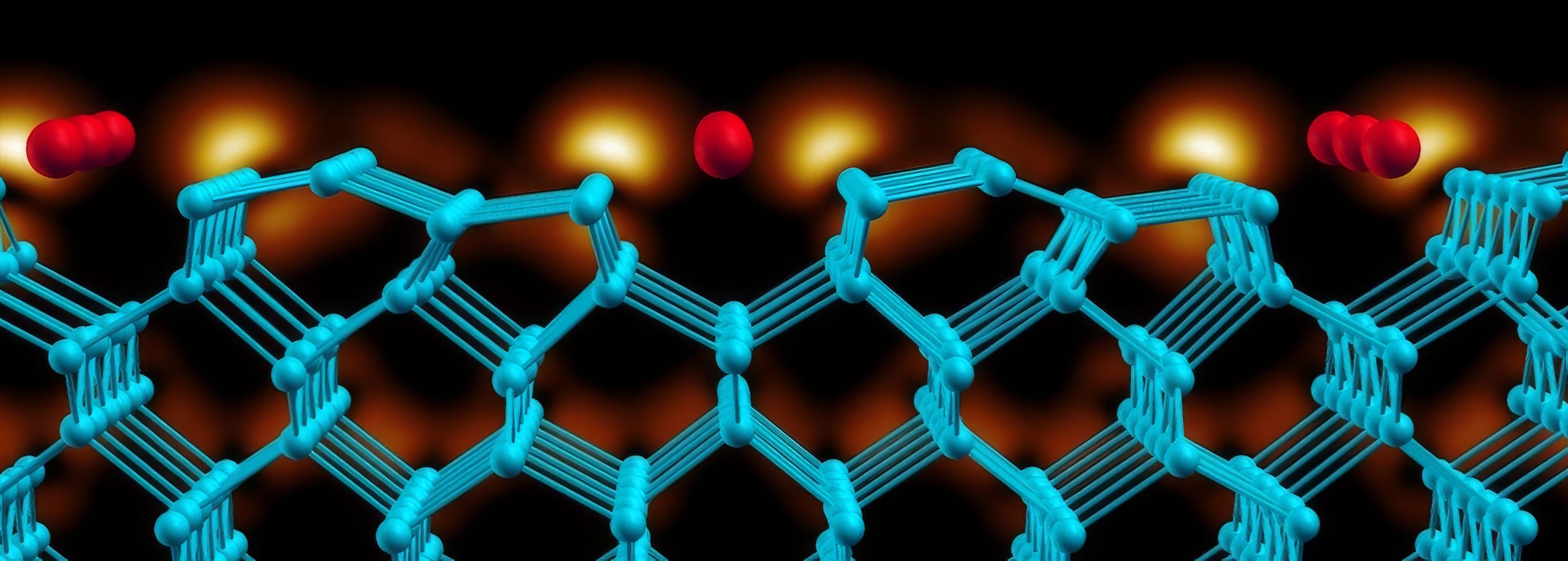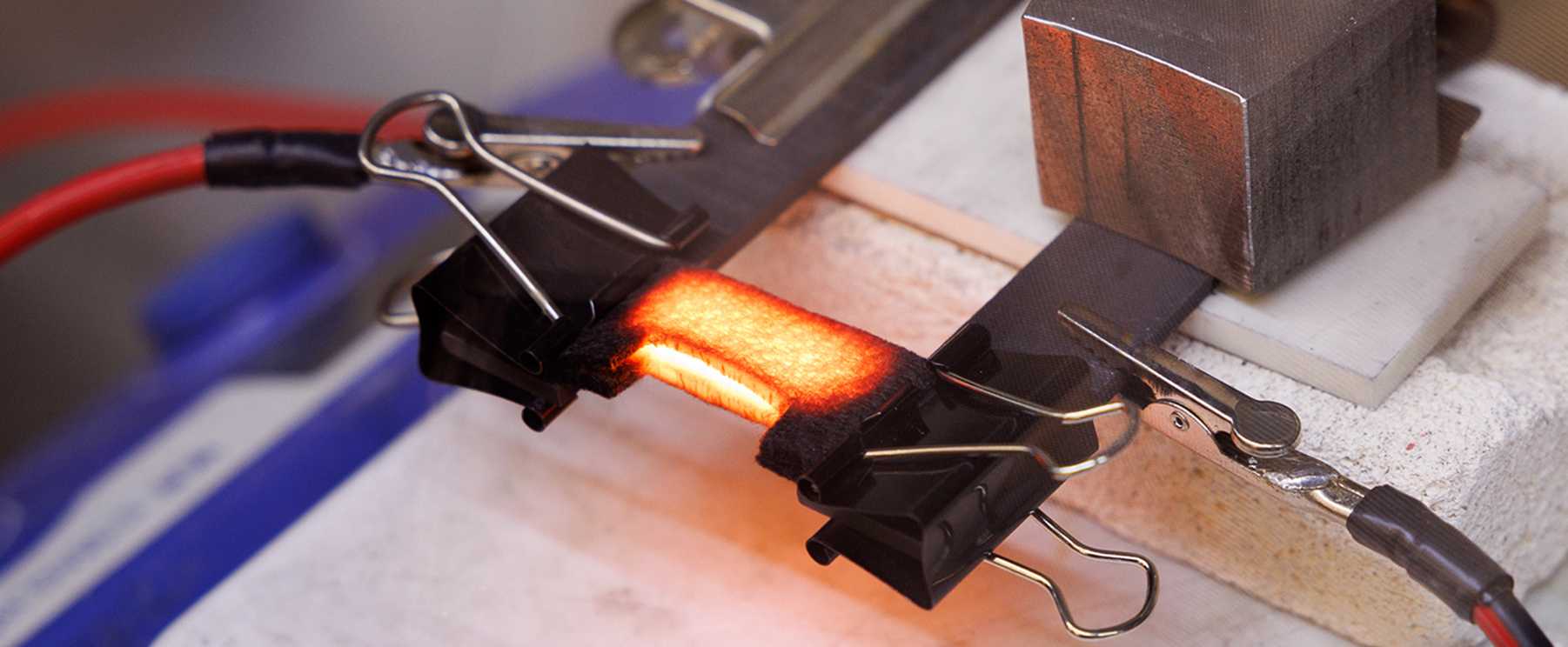Research Areas
Materials Science

At Yale's Materials Science Department, our research transcends traditional boundaries to explore matter's fundamental properties and revolutionary applications. Our interdisciplinary teams investigate everything from quantum phenomena to global systems, manipulating materials atom by atom through computational modeling, AI-driven discovery, and state-of-the-art experimental techniques. By bridging physics, chemistry, biology, engineering and beyond, we create innovations that address humanity's grand challenges in computing, energy, sustainability, healthcare, and infrastructure – pushing beyond conventional limitations to shape our collective future.
Quantum & Low-Dimensional Materials

Quantum Materials explores the fundamental properties and applications of materials with electronic structures explained only at the quantum level. Research focuses on the discovery, design, and engineering of advanced materials, including 1D and 2D systems, complex oxides, and topological materials. Our key areas include manipulating atomic and electronic structures to control properties, tailoring light-matter interactions, and understanding many-electron correlations to enable innovations in optoelectronics, quantum information, and energy technologies.
Associated Faculty

Charles Ahn
John C. Malone Professor of Applied Physics & Materials Science

Sohrab Ismail-Beigi
Strathcona Professor of Applied Physics & Materials Science

Diana Qiu
Assistant Professor of Materials Science

Cong Su
Assistant Professor of Materials Science

Fengnian Xia
Tso-Ping Ma Professor of Electrical & Computer Engineering
Energy Materials

Energy Materials are dedicated to addressing global challenges in clean energy, carbon emission mitigation, and environmental protection. Research spans the design and discovery of advanced materials for energy storage, generation, and environmental applications. Efforts focus on catalytic processes for efficient energy conversion, such as electrocatalysis and photocatalysis, as well as the development of novel ion conductor materials, nanostructures and interfaces in next-generation batteries and fuel production systems. Advanced computational methods, including density functional theory and machine learning, guide the discovery of high-performance materials, such as supercapacitors, beyond Li-ion batteries, thermoelectrics, and solar cells. Experimental techniques explore atomic-scale interactions and nature-inspired strategies for solar-driven water splitting. Our multidisciplinary approach aims to unlock new possibilities for sustainable energy technologies and environmental solutions.
Associated Faculty

Gary Brudvig
Benjamin Silliman Professor of Materials Science

Liangbing Hu
Carol and Douglas Melamed Professor of Electrical & Computer Engineering & Materials Science

Sohrab Ismail-Beigi
Strathcona Professor of Applied Physics & Materials Science

Vidvuds Ozolins
Tom Steyer & Kat Taylor Professor of Applied Physics & Materials Science

Diana Qiu
Assistant Professor of Materials Science

W. Mark Saltzman
Sterling Professor of Biomedical Engineering

Udo D. Schwarz
Professor of Mechanical Engineering

Cong Su
Assistant Professor of Materials Science

Hailiang Wang
Professor of Materials Science

Mingjiang Zhong
Associate Professor of Chemical & Environmental Engineering
Soft, Polymer & Bio Materials

Soft, Polymer, and Bio Materials explores the fundamental properties and applications of materials that exhibit unique adaptability, functionality, and interactions with their environments. Key topics include the dynamics of glass and jamming transitions in soft matter, protein folding and self-assembly, and the biomechanics of animal movement to inspire robotics. We develop advanced organic, polymeric, and bio materials for energy, catalysis, and environmental applications, alongside multifunctional materials and responsive composites for soft robotics. Our studies also address transport phenomena in biological and geophysical systems, focusing on nanocellulose, wood, bacteria, biofilms, and microplastics in soil and oceanic ecosystems. By combining theoretical modeling, experimental methods, and cutting-edge manufacturing, this subfield drives innovations in adaptive materials and sustainable technologies, bridging biology, physics, and engineering.
Associated Faculty

Liangbing Hu
Carol and Douglas Melamed Professor of Electrical & Computer Engineering & Materials Science

Amir A. Pahlavan
Assistant Professor of Mechanical Engineering

Rebecca Kramer-Bottiglio
John J. Lee Associate Professor of Mechanical Engineering

Corey S. O'Hern
Professor of Mechanical Engineering

Madhusudhan Venkadesan
Associate Professor of Mechanical Engineering

Mingjiang Zhong
Associate Professor of Chemical & Environmental Engineering
Electronic & Optical Materials

Electronic and Optical Materials focuses on the design, discovery, and control of materials with exceptional electronic and optical properties. We use theoretical, computational, and experimental approaches to study fundamental phenomena and develop technologies that bridge condensed matter physics, engineering, and artificial intelligence. Key research areas include exploring quantum geometry, band topology, and many-electron interactions in advanced materials like complex oxides, 2D systems, and heterostructures. Efforts focus on understanding and controlling light-matter interactions, electron and phonon transport, and the nonlinear and ultrafast optical response of materials for applications in optoelectronics and quantum information. Experimental techniques such as molecular beam epitaxy, transmission electron microscopy, and synchrotron x-ray scattering are used to fabricate and characterize materials and devices. Innovations in intelligent sensing, infrared imaging, and reconfigurable devices integrate advances in AI with material synthesis and device engineering. This interdisciplinary field pushes the boundaries of technology, enabling breakthroughs in electronics, sensing, and quantum technologies.
Associated Faculty

Charles Ahn
John C. Malone Professor of Applied Physics & Materials Science

Sohrab Ismail-Beigi
Strathcona Professor of Applied Physics & Materials Science

Vidvuds Ozolins
Tom Steyer & Kat Taylor Professor of Applied Physics & Materials Science

Diana Qiu
Assistant Professor of Materials Science

Cong Su
Assistant Professor of Materials Science

Fengnian Xia
Tso-Ping Ma Professor of Electrical & Computer Engineering
Metals, Ceramics & Structural Materials

Metals, Oxides, and Structural Materials investigates the mechanical and chemical properties of metallic and oxide-based materials, focusing on their structure, processing, and performance. Research spans from understanding atomic-scale interactions to fabricating advanced materials with tailored properties. Key areas include the design and study of metallic glasses, high-entropy alloys, and nanocrystalline metals, addressing phenomena like glass formation, deformation mechanisms, and metastability. Oxide materials research focuses on multifunctional and correlated oxides, exploring electronic and atomic reconstructions, catalysis, and the development of nonvolatile logic switches for advanced computing. State-of-the-art techniques such as molecular beam epitaxy, additive manufacturing, and high-resolution scanning probe microscopy are employed to fabricate and characterize materials. Computational modeling and data science approaches further enhance the understanding and prediction of material behaviors.
Associated Faculty

Charles Ahn
John C. Malone Professor of Applied Physics & Materials Science

Liangbing Hu
Carol and Douglas Melamed Professor of Electrical & Computer Engineering & Materials Science

Sohrab Ismail-Beigi
Strathcona Professor of Applied Physics & Materials Science

Corey S. O'Hern
Professor of Mechanical Engineering

Vidvuds Ozolins
Tom Steyer & Kat Taylor Professor of Applied Physics & Materials Science

Jan Schroers
Robert Higgin Professor of Materials Science & Mechanical Engineering

Udo D. Schwarz
Professor of Mechanical Engineering